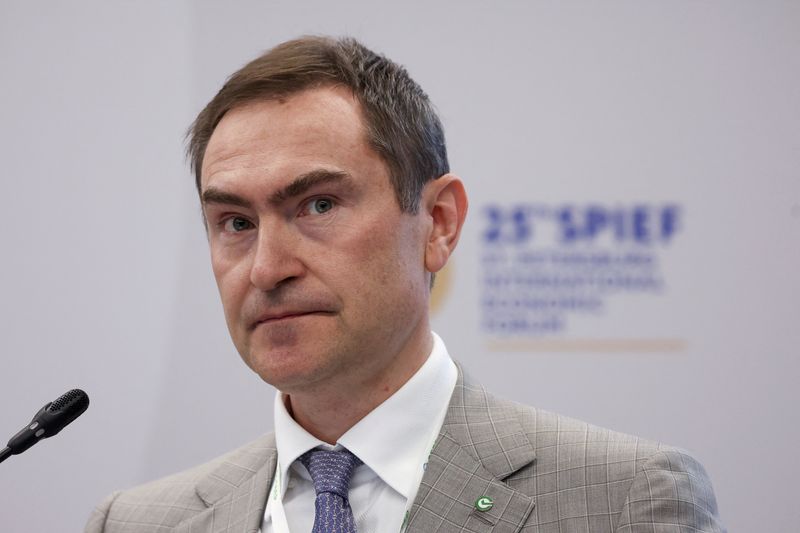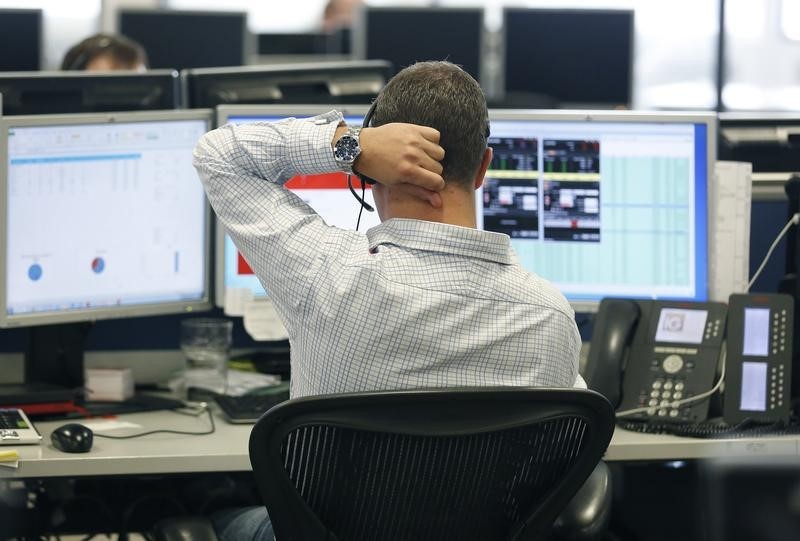By Gleb Bryanski and Elena Fabrichnaya
MOSCOW (Reuters) – Russia has the potential to improve its position on global AI ratings by 2030 despite Western sanctions, thanks to talented developers and its own generative AI models, the first deputy CEO of Russia’s largest lender Sberbank said. to Reuters.
Some AI developers left Russia in recent years, mainly fleeing a mobilization drive for the 2022 conflict in Ukraine, but Alexander Vedyakhin said people were returning home, lured by the new opportunities, and he said it was crucial to continue encouraging experimentation in the sector.
Russia is six to nine months behind the United States and China, the world’s leading AI pioneers, on a number of parameters, but that could soon change, he said.
“I am confident that Russia can significantly improve its current positions in international rankings by 2030 through its own developments and supporting regulations in the field of generative AI,” said Vedyakhin, whose bank is leading AI development in Russia .
“(Western) sanctions were aimed at limiting Russian computing power, but we are trying to make up for the shortage with our talented scientists and engineers,” he said in the interview, which was published on Thursday.
Russia currently ranks 31st out of 83 countries in AI implementation, innovation and investment on Britain’s Tortoise Media’s Global AI Index, well behind not only the United States and China, but also BRICS countries India and Brazil.
President Vladimir Putin said on Wednesday at Sberbank’s annual AI Journey conference that Russia would develop AI with its BRICS partners and other countries, in an effort to challenge US dominance in one of the most promising technologies of the 21st century.
Vedyakhin said Russia would not compete with the US and China in building giant data centers, but would focus on developing smart AI models similar to Meta (NASDAQ:)’s Large Language Model Meta AI, known as Llama.
Large Language Models (LLM) mine vast amounts of text to summarize information and generate content. For example, they can answer questions with sentences that read as if they were written by humans.
‘HERRING UNDER FUR COAT’
Vedyakhin said generative AI models in the Russian language would guarantee the country’s technological sovereignty.
“I believe that every country that considers itself independent on the world stage should have its own great language model,” Vedyakhin said. Russia is among ten countries developing their own national generative AI models.
Vedyakhin pointed out the weaknesses of English-language trained models in national markets, where they often do not understand the local context.
For example, he said, a typical Western LLM, when asked to draw a picture of a popular Russian dish, commonly called “herring under a fur coat,” would draw a fish wearing a fur coat, not the dish.
Vedyakhin said China and especially Europe are losing their lead in AI due to excessive regulation, adding that he hoped Russia would enforce AI-supporting regulations in the future.
“If we deprive our scientists and big companies of the right to experiment now, it will hold back the development of technology. Once bans come, we may start to lose the artificial intelligence race,” Vedyakhin said.
“Here people are not punished for experimenting. When errors occur, it is not something terrible with serious consequences. The longer we keep this up, the greater the chance that Russia will become one of the leaders in AI technology,” he said.
Despite an overall decline in venture capital investments in Russia, investments in AI startups have continued to grow, Vedyakhin said, signaling future fragmentation of a market currently dominated by Sberbank and tech company. Yandex (NASDAQ:).

Vedyakhin said the rise of decentralized autonomous organizations (DAO) – where AI workers communicate using blockchain technology – could help Russia tackle labor shortages.
“In such a DAO there can be only one human, a CEO or owner, and everything else is done by AI agents,” he said, predicting that DAO could be deployed on a large scale in Russia within three to five years are used.


